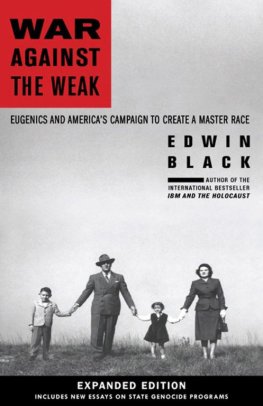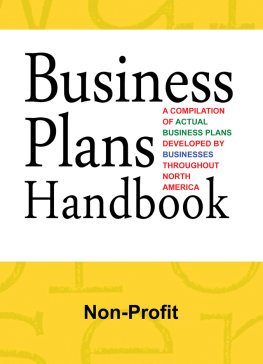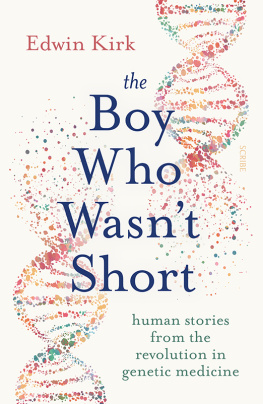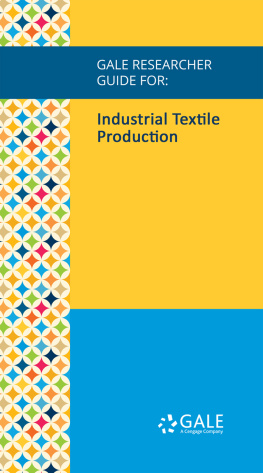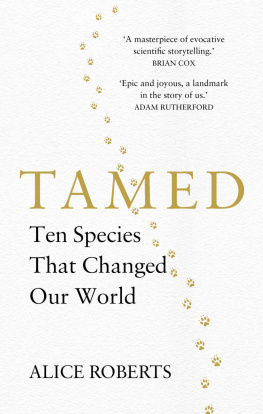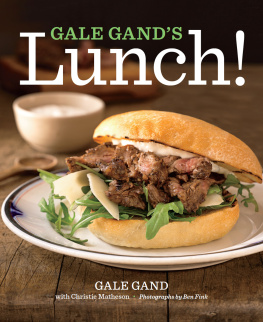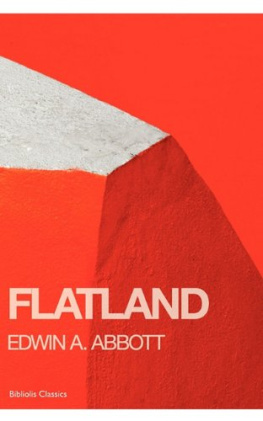Edwin Gale - Species That Changed Itself.
Here you can read online Edwin Gale - Species That Changed Itself. full text of the book (entire story) in english for free. Download pdf and epub, get meaning, cover and reviews about this ebook. year: 2020, publisher: Penguin Books, Limited, genre: Home and family. Description of the work, (preface) as well as reviews are available. Best literature library LitArk.com created for fans of good reading and offers a wide selection of genres:
Romance novel
Science fiction
Adventure
Detective
Science
History
Home and family
Prose
Art
Politics
Computer
Non-fiction
Religion
Business
Children
Humor
Choose a favorite category and find really read worthwhile books. Enjoy immersion in the world of imagination, feel the emotions of the characters or learn something new for yourself, make an fascinating discovery.
- Book:Species That Changed Itself.
- Author:
- Publisher:Penguin Books, Limited
- Genre:
- Year:2020
- Rating:5 / 5
- Favourites:Add to favourites
- Your mark:
- 100
- 1
- 2
- 3
- 4
- 5
Species That Changed Itself.: summary, description and annotation
We offer to read an annotation, description, summary or preface (depends on what the author of the book "Species That Changed Itself." wrote himself). If you haven't found the necessary information about the book — write in the comments, we will try to find it.
Species That Changed Itself. — read online for free the complete book (whole text) full work
Below is the text of the book, divided by pages. System saving the place of the last page read, allows you to conveniently read the book "Species That Changed Itself." online for free, without having to search again every time where you left off. Put a bookmark, and you can go to the page where you finished reading at any time.
Font size:
Interval:
Bookmark:



- PART 1 :
The Great Escape - PART 2 :
Plasticity - PART 3 :
Lifes Journey - PART 4 :
Changing Our Minds - PART 5 :
Living Together
Edwin Gale studied English Literature at Cambridge before switching to a career in medicine. He worked in Cambridge, Nottingham, Copenhagen, and as a professor at St Bartholomews Hospital, London. Research into the rise of diabetes stimulated his interest in our changing phenotype. He moved with his team to the University of Bristol in 1997, and retired in 2011.
Every effort has been made to contact all copyright holders. The publishers will be pleased to amend in future editions any errors or omissions brought to their attention.
Luilekkerland in The Land of Cockaigne. Engraving after Pieter Breughel the Elder, 1567. (Metropolitan Museum of Art, New York. Harris Brisbane Dick Fund, 1926 (Acc. No. 26.72.44).)
The proportions of the large and small intestines in humans and primates.
Gravettian skeleton from the Grottes des Enfants 4, Grimaldi, Italy, c.25,000 BC . ( Museum of Prehistoric Anthropology, Monaco.)
atalhyk: artists reconstruction. (Dan Lewandowski.)
Medieval serfs harvesting wheat with reaping-hooks under the command of a manorial supervisor. Miniature from Queen Marys Psalter, c.131020. ( British Library Board. All Rights Reserved / Bridgeman Images (Ms. Royal 2. B. VII, fol. 78v).)
Nineteenth-century US advertisement for guano from the Chincha Islands. (Mystic Seaport, Mystic, CT.)
Farmers, do your duty! The cities are starving. Poster by Heinrich Hnich, Munich, 1919. (Library of Congress Prints and Photographs Division, Washington DC.)
Children drinking milk, Holy Trinity School, Lambeth, 1929. (EUD/TopFoto.)
Wheat yields in the UK, 12702014.
The estimated biomass of humans and three sources of meat in 1960 and 2010.
Sequence of human skulls. Illustration from Johann Friedrich Blumenbach, De generis humani varietate nativa, 3rd edition, 1795. (Wellcome Collection, London.)
Recruitment poster for the West of England Bantams, c.1914. (Private collection.)
Immigrants being examined by US physicians, Ellis Island, 1907. (Universal History Archive/Getty Images.)
Members of the Stand Off Hutterite colony, Alberta, Canada, March 1919. Photograph by Friedrich Zieglschmid, 1946. (Courtesy of Glenbow Library and Archives, Archives and Special Collections, University of Calgary.)
Fecundity of women in traditional and modern cultures.
Top: wife and children of a fish-hawker. Bottom: wife and children of an iron-moulder. Photographs from Womens Co-operative Guild, Maternity: Letters from Working-Women, 1915.
Maternal mortality in childbirth, Britain, 18801980.
Maternal constraint: the foal resulting from a cross between a Shire stallion and a Shetland mare and the Foal of a Shire mare and a Shetland stallion. Illustration from A. Walton and J. Hammond, Proceedings of the Royal Society B, vol. 125 (1938).
The skeleton of Pacchiarotti. Photograph from A. Zanatta et al., Occupational markers and pathology of the castrato singer Gaspare Pacchierotti (17401821), Scientific Reports 6, 28463 (2016).
Gin Lane (detail). Engraving by William Hogarth, 175051. (Private collection.)
The height and weight of Belgian boys in 1835 on a modern growth chart.
Left: Adah Menken, photograph, 1860s. (Billy Rose Theatre Division, The New York Public Library Digital Collections.) Centre: Drawing by Albrecht Drer from Four Books on Human Proportion, 1528, p. 240. Right: Cheryl Cole. Photograph from The Cheryl Cole Official Calendar 2010, Danilo Promotions Limited, 2019.
Left: Young Couple Threatened by Death, engraving by Albrecht Drer, c.1498. (National Gallery of Victoria, Melbourne. Felton Bequest, 1956 (Acc. No. 3508-4).) Right: Peasant Couple Dancing, engraving by Albrecht Drer, 1514. (Metropolitan Museum of Art, New York. Bequest of Ida Kammerer, in memory of her husband, Frederic Kammerer, MD, 1933 (Acc. No. 33.79.1).)
Human proportions, real and enhanced. Drawing by Andrew Loomis from Figure Drawing for All Its Worth, 1943, p. 28. ( The Estate of Andrew Loomis.)
Composite figures of white American male and female students of the 1890s. Typical Man and Woman. Sculptures by Henry Hudson Kitson and Theo Alice Ruggles, 1890s. ( President and Fellows of Harvard College, Peabody Museum of Archaeology and Ethnology (PM20-3-10/59929.0 and 20-3-10/59930.0). Gift of Dr Dudley A. Sargent, 1920.)
Composite young white Americans, 1943. Normman and Norma. Sculptures by Abram Belskie and Robert Latou Dickinson, 1943. (Cleveland Museum of Natural History.)
Mens 100 metres sprint records.
Left: Usain Bolt, 2011. (Andy Lyons/Getty Images.) Right: Michael Phelps, 2011. (AP/Rex/Shutterstock.)
Left: Barbie. (David Hare/Alamy.) Right: Candice Swanepoel, 2013. (WireImage/Getty Images.)
A sow gelder. Engraving after Marcellus Laroon from The Cryes of London Drawne after the Life, 1688. ( Trustees of the British Museum (1972, U.370.2).)
A bodybuilder. (Shutterstock.)
Left and right: The Venus of Willendorf, 30,000 BC . (Naturhistorisches Museum, Vienna/Interfoto/Alamy.) Centre: Middle segment preponderance of a 33-year-old woman. Photograph from Obesity and Leanness by Hugo R. Rony, 1940, p. 167.
The trajectory of age and weight of men in 1835, 18851900 and 2007.
BMI difference between 2029 age group and 5059 age group (female), 19132010.
US per capita calorie consumption, 19702010.
Obese male. (Shutterstock.)
Comparison of the body fat of a European and an Indian with identical BMIs. (Courtesy of Professors Yajnik and Yudkin.)
Excess deaths related to obesity in three US national surveys.
Louse on a strand of hair. Engraving from Robert Hooke, Micrographia: or Some Physiological Descriptions of minute bodies made by magnifying glasses, 1665.
German soldiers delousing in the trenches, 1915. (Bettmann/Getty Images.)
Plaque commemorating Dr Samuel Rabbeth, Postmans Park, London.
Death rate from tuberculosis in the UK, 18381970.
The rise of childhood-onset diabetes in Norway, 19301995.
Actual and projected expectation of life at birth in the UK, 19812085.
Age at death of males in the UK, 18502010.
The probability of dying at a given age in England and Wales in 1847 and 2016.
US Senator John H. Glenn Jr. aboard the Space Shuttle Discovery, 1998. NASA.
The biological age of 38-year-olds.
Ten centenarians at Clarewood House Senior Community, Houston, Texas, 2018. (Mark Mulligan/The Houston Chronicle.)
Life expectancy at birth vs GDP per capita.
Males and females, ages 3569, mortality from coronary heart disease, UK.
Mortality from cancer and CVD: general population, USA.
Cradle to Grave
Next pageFont size:
Interval:
Bookmark:
Similar books «Species That Changed Itself.»
Look at similar books to Species That Changed Itself.. We have selected literature similar in name and meaning in the hope of providing readers with more options to find new, interesting, not yet read works.
Discussion, reviews of the book Species That Changed Itself. and just readers' own opinions. Leave your comments, write what you think about the work, its meaning or the main characters. Specify what exactly you liked and what you didn't like, and why you think so.


